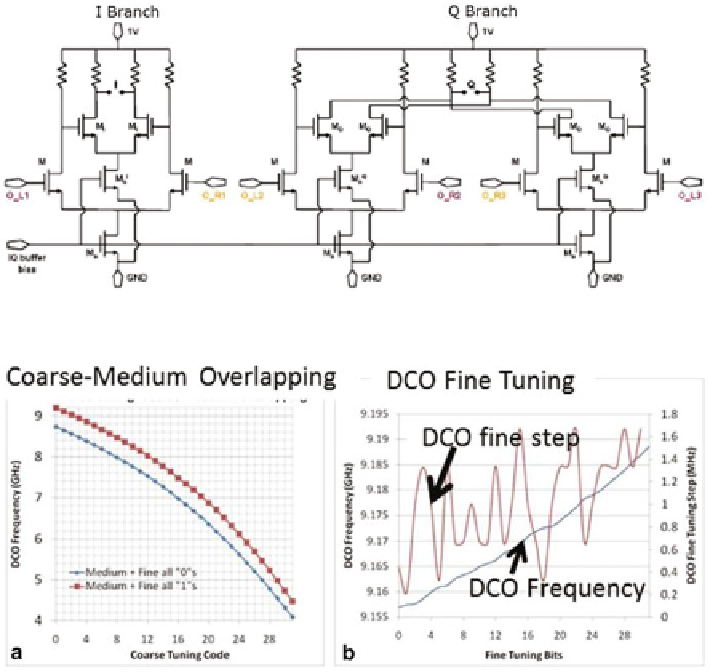Biomedical Engineering Reference
In-Depth Information
Fig. 15
Schematic of the IQ buffer
Fig. 16
DCO measurement results.
a
Coarse-Medium overlapping.
b
Fine tuning behavior for
fixed coarse and medium codes
sufficient overlap to prevent any gaps in the tuning range. Figure
16
b shows the fine
tuning behavior for fixed coarse and medium codes. The total power consumption
varies from 16 mW to 25mW.
Receiver Design
The IR-UWB receiver consists of three blocks, the front-end IC, a 500 MHz ADC, and
the baseband algorithms for synchronization, tracking, and demodulation developed
on an FPGA. The FPGA-based digital architecture enables a flexible baseband with
advanced algorithms and, thus, better performance.
The receiver front-end consists of a Low-Noise-Amplifier (LNA), a quadrature
mixer, and a 5-stage VGA. A differential LNA is chosen for the common mode
noise rejection and better gain performance. Moreover, the differential choice is
also compatible with the differential transmitter described in the previous section,
allowing a direct connection to the differential antenna dedicated to the system.

Search WWH ::

Custom Search